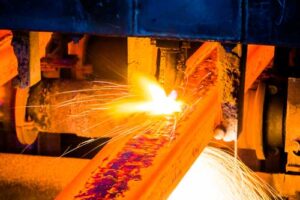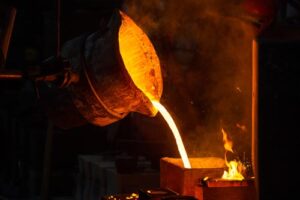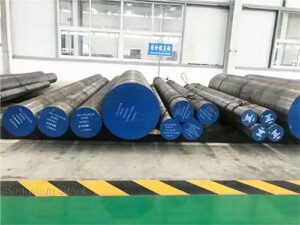Verktygsstål för varmbearbetning is a class of materials known for their exceptional heat resistance and wear properties. These steels are used in high-temperature applications, such as die casting, forging, and extrusion, where maintaining hardness, toughness, and dimensional stability at elevated temperatures is crucial. A key factor that contributes to these properties in hot work tool steel is its alloy composition. In this comprehensive article, we will explore the common alloys found in hot work tool steel, understanding how each element contributes to the steel’s remarkable performance in demanding industrial settings.
1. Introduction
Hot work tool steel is a specialized class of steel alloys that excel in high-temperature applications. The alloy composition plays a pivotal role in determining the steel’s properties, making it an essential factor to consider when selecting the appropriate material for demanding industrial processes.
2. Alloying Elements in Verktygsstål för varmbearbetning
Chromium (Cr)
Chromium is a key alloying element in hot work tool steel. It contributes to the steel’s high-temperature strength and corrosion resistance. Chromium also enhances hardenability, which is crucial for achieving the desired hardness and toughness in the steel.
Tungsten (W)
Tungsten is known for its ability to increase the high-temperature strength and wear resistance of hot work tool steel. It helps in maintaining the steel’s hardness and dimensional stability even under extreme heat and pressure conditions.
Molybdenum (Mo)
Molybdenum is another critical element in hot work tool steel alloys. It enhances the steel’s heat resistance and contributes to its ability to withstand thermal fatigue. Molybdenum also improves the steel’s toughness, reducing the risk of fractures and breakages.
Vanadium (V)
Vanadium is often added to hot work tool steel to improve its high-temperature strength and wear resistance. It refines the steel’s grain structure, enhancing its toughness and reducing the susceptibility to heat-related deformation.
3. How Alloying Elements Shape Hot Work Tool Steel
Heat Resistance
The combined presence of chromium, tungsten, molybdenum, and vanadium in hot work tool steel provides exceptional heat resistance. This property allows the steel to maintain its strength and hardness even at temperatures exceeding 600°C (1112°F).
Wear Resistance
The alloying elements contribute to wear resistance by enhancing the steel’s hardness and abrasion resistance. This makes hot work tool steel ideal for applications involving friction and wear, such as extrusion and forging.
Toughness
While hot work tool steel is known for its hardness, the alloying elements also play a vital role in maintaining toughness. This ensures that the steel can withstand high-stress loads and impact without fracturing or failing.
4. Common Grades of Hot Work Tool Steel
AISI H13
AISI H13 is a popular grade of hot work tool steel known for its excellent combination of heat resistance, wear resistance, and toughness. It is widely used in die casting, forging, and extrusion applications.
AISI H11
AISI H11 is valued for its high-temperature strength and wear resistance. It finds applications in forging dies and extrusion tooling, where maintaining dimensional stability under heat is critical.
AISI H21
AISI H21 is recognized for its exceptional heat resistance and machinability. It is often chosen for applications that involve high-temperature cutting and shaping.
5. Applications of Hot Work Tool Steel Alloys
Die Casting
Hot work tool steel alloys are commonly used to create die casting molds. Their heat resistance and wear properties ensure that the molds maintain their precision and durability during the die casting process.
Forging
In forging applications, hot work tool steel alloys are employed to craft forging dies. Their ability to withstand extreme temperatures and pressure is essential for producing high-quality forged components.
Extrusion
Hot work tool steel alloys play a crucial role in extrusion processes, where materials are shaped under high temperatures and pressure. These alloys ensure the durability and longevity of extrusion tooling.
Plastic Molding
Hot work tool steel alloys are used in plastic molding applications, where they help create molds that can withstand the high temperatures and pressures involved in the injection molding process.
6. Challenges and Solutions
Heat-Related Challenges in High-Temperature Applications
Industries that rely on hot work tool steel alloys often face challenges related to extreme heat, including softening of materials, deformation of tooling, and reduced tool life.
How Alloying Elements Address These Challenges
The alloying elements in hot work tool steel alloys provide solutions to these challenges. They maintain the structural integrity of the steel and tooling, ensuring consistent performance, durability, and precision even in high-temperature environments.
7. FAQs
Frequently Asked Questions About Alloys in Hot Work Tool Steel
Q1. Are there specific alloy combinations for different hot work tool steel grades?
Yes, different hot work tool steel grades may have unique alloy combinations tailored for specific applications and operating conditions.

